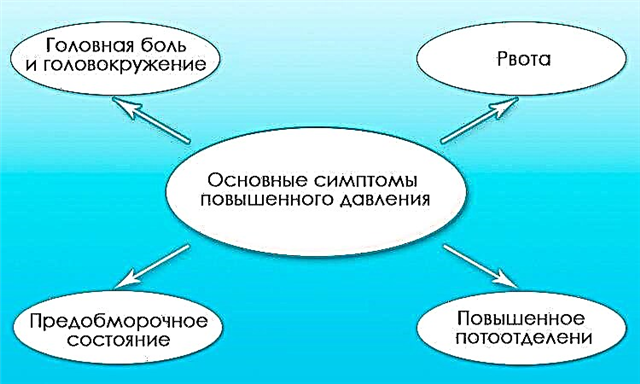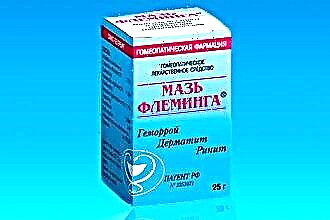 How to treat green snot for a child? Herbal preparations have a good therapeutic effect, but in most cases they are not able to completely cure the disease, therefore they are often used in combination with more powerful medicines.
How to treat green snot for a child? Herbal preparations have a good therapeutic effect, but in most cases they are not able to completely cure the disease, therefore they are often used in combination with more powerful medicines.
Snot and cough in a child are much more severe than in adults. Starting from 2 years old, it becomes more difficult for babies to resist pathogenic microorganisms, allergens and irritating environmental factors. The fact is that the immune system is still imperfect, and the immunoglobulins that came with breast milk no longer have a protective effect. In addition, the social circle expands significantly, which predisposes to infection.
Features of the course of the disease
To cure green snot, you need to take into account the cause of the disease, its severity, the age of the child and the presence of concomitant diseases.
In a child, green snot may appear due to:
- colds, severe hypothermia, when bacterial pathogens penetrate into the mucous membrane against the background of immunosuppression;
- viral infection. Depending on the aggressiveness of pathogenic microorganisms, the inflammatory focus can be localized not only in the nasopharynx, but in the lower parts of the respiratory tract;
- improper treatment of rhinitis;
- exacerbation of chronic sinusitis;
- inflammation of the growths of the lymphoid tissue of the nasopharyngeal tonsil (adenoiditis);
Adenoids in one-year-old children are rare, usually tonsil hypertrophy is detected in a child 3-8 years of age.
- infection against the background of a long-lasting allergic rhinitis.
Pathogenic microorganisms multiply rapidly in poorly ventilated cavities, therefore thick green snot is usually observed in children with:
- anomalies in the development of the nasal passages, when one lumen is much less than the second;
- deformation of the septum;
- polyps in the nasal passages;
- changes in the structure of the nose of traumatic origin.
Clinical manifestations
Purulent snot in a child has a yellow-green color, sometimes a fetid odor (like in the lake). In addition to nasal discharge, you may experience:
- nasal voice;
- Difficulty nasal breathing;
- decrease in the sharpness of taste;
- lack of smell;
- nasal congestion;
- heaviness in the paranasal zone;
- headache;
- decreased appetite;
- capriciousness;
- sleep disturbance;
- night snoring;
- inattention, irritability;
- coughing. A runny nose is accompanied by a cough when the inflammatory process from the nasopharynx spreads to the laryngeal mucosa, causing laryngitis. Laryngospasm is especially dangerous against the background of pronounced edema of the vocal cords, which is often noted in a child of three to four years;
- hyperthermia. In the chronic course of the disease, the temperature can be kept at a level not higher than 37.2 degrees. With an exacerbation, an increase of up to 39 degrees is possible.

With long-term preservation of green secretions and nasal congestion, children become accustomed to breathing through the mouth. Their facial expressions become dejected, their mouths are open and they are worried about constant dryness in the mouth.
Complications
With green snot, there is a high risk of complications. They are associated with the spread of the inflammatory process and infectious pathogens. Among the possible undesirable consequences of a cold, it is worth noting:
- sinusitis (inflammation of the mucous membrane of the paranasal sinuses);
- otitis. In children at 1 year old, the auditory tube is much shorter than at 6 years old, so the risk of swelling of its mucous membrane is higher. Impaired ventilation in the ear cavities is accompanied by the activation of opportunistic flora and the development of otitis media;
- pharyngitis, tonsillitis;
- pneumonia;
- nasal bleeding due to a violation of the integrity of small blood vessels.
Treatment
Effective treatment of green snot in children must be timely and comprehensive. For this, medications and physiotherapy procedures are prescribed.
Physiotherapy is usually given during remission of a chronic illness such as sinusitis. The procedures are necessary to enhance the therapeutic effect of drugs, as well as to accelerate recovery. Children can be prescribed UHF-, UV-therapy, inhalations.
Inhalation of herbal decoctions, antiseptics, anti-inflammatory drugs allows you to deliver medicinal particles of medicines directly to the inflammation focus. Another method of therapy is massage. It is performed to activate local blood circulation, improve delivery of biologically active components and accelerate drug absorption.
 How to treat green snot in a child? The following groups of drugs can be used in the treatment:
How to treat green snot in a child? The following groups of drugs can be used in the treatment:
- antibacterial. The antibiotic can be prescribed in tablet form (Sumamed) for severe disease, as well as for local sanitation of the infectious focus (Kameton, Miramistin, Bioparox);
- antihistamines (Loratadine). They are prescribed to reduce the symptoms of an allergic reaction and swelling of the nasal mucosa. For intranasal administration, Allergodil is used;
- vasoconstrictor (Nazol baby, Nazivin) - necessary to reduce the severity of tissue edema, facilitate the outflow of mucus from the sinuses;
- combined (Vibrocil), which include a vasoconstrictor and antihistamine substance;
- herbal, homeopathic (Delufen) - prescribed for chronic rhinitis, when long-term treatment is required;
- mucolytics (Sinupret). Due to the action of the drug, the viscosity of purulent secretions decreases, and therefore mucus is more easily drained from the paranasal cavities.
Flushing the nasal passages
You can treat green snot in a child using rinsing procedures. Their effect is to sanitize cavities, cleanse, moisturize the mucous membrane and protect it from the irritating influence of environmental factors. In addition, rinsing the nose makes it possible to facilitate the outflow of pus from the cavities by reducing its viscosity.
The technique of the procedure is somewhat different for a baby and at 4 years old. An older child can blow his nose on his own, which is impossible for a baby. Washing rules:
- the solution must be warm to avoid irritation of the mucous membrane;
- the newborn needs a special suction device with a soft tip. It is necessary for the gentle removal of solution and mucus from the nasal passages;
- blow your nose well after the procedure.
Do not inject the solution under pressure from a pear or forcefully draw in liquid through the nostrils. When flushing, water should flow into the nasal passages exclusively by gravity.
If a child has a runny nose at the age of 3, you can use saline preparations. They come in the form of a rinse or drip solution. Children are allowed Aqualor, Humer, Marimer, No-Sol, Salin. Let's take a closer look at the features of using Aqua Maris. The drug is based on seawater. It comes in aerosol and droplet form. The solution is odorless, colorless. Aqua Maris maintains the physiological state of the mucous membrane, cleans it from mucus and protects it from irritating factors.
The drug normalizes secretion, improves the efficiency of the ciliated epithelium. It has no contraindications, side reactions, therefore it is prescribed from the first days of life.Up to a year, drops are used (two three times a day), then a spray (one spray up to four times a day).
Drip injection of drugs
In the treatment of snot for children, drip forms of drugs can be prescribed. The first group of medicines that are used to facilitate nasal breathing are vasoconstrictors.
The most commonly used are Vibrocil, Otrivin, Nazol baby, Nazivin. Due to the low concentration of the main active ingredient, the drugs can be used in childhood.
Vibrocil
 The drug is a drop with vasoconstrictor and antihistamine properties. The solution may have a yellowish tinge and a faint lavender aroma. Action of the medicine:
The drug is a drop with vasoconstrictor and antihistamine properties. The solution may have a yellowish tinge and a faint lavender aroma. Action of the medicine:
- reduction of swelling of the mucous membrane;
- blocking histamine receptors;
- decrease in the volume of discharge;
- relief of nasal breathing;
- improving the outflow of mucus from the paranasal sinuses;
- restoration of ventilation in the ear, paranasal sinuses.
Contraindications include:
- age up to 2 years;
- individual intolerance to the components of the drug;
- atrophic type of rhinitis;
- glaucoma;
- taking some sedative medications.
Before instillation, it is necessary to clear the nasal passages with saline. Children under 5 years old are shown 1-2 drops up to four times a day. At an older age, 3-4 drops are allowed to drip into the nose.
Sometimes side reactions can be observed in the form of:
- discomfort, dryness, baking sensations in the nasal passages;
- nasal bleeding;
- allergies, which are manifested by skin rashes, swelling of the face, itchy sensations in the eyes.
Sinupret
Sinupret has a healing effect. It consists of plant components and 19% ethanol. It has an immunomodulatory, anti-inflammatory, anti-edema effect, and also reduces the viscosity of purulent snot and prevents their accumulation.
Drops are contraindicated in hypersensitivity and peptic ulcer of the digestive tract. The medicine should be taken after meals. Starting from two years old, 15 drops are prescribed three times a day. Over the age of six, 25 drops are recommended, from 11 years - 50 drops. The solution has a bitter taste, so it must be diluted with juice or tea. Possible side reactions include dyspeptic disorders (nausea, vomiting, abdominal pain, diarrhea), as well as allergies, which are manifested by itching, urticaria, tissue edema and shortness of breath.
Protargol
The drug has antiseptic, astringent properties. It contains silver proteinate. The drug is contraindicated in hypersensitivity.
The solution is used for intranasal administration, 1-2 drops three times a day. Protargol can be used in infants. It is usually well tolerated. Quite rarely, cases of irritation, dryness of the nasal mucosa, as well as burning and itching sensations are recorded.
If signs of an allergic reaction appear, it is necessary to wash off the drug from the surface of the mucous membrane with saline or boiled water. The simultaneous use of the drug with vasoconstrictor drugs is not recommended.
Systemic therapy
A systemic antibiotic is prescribed for severe disease, when local treatment is ineffective, and there is a threat of serious complications. To reduce the severity of general intoxication, Flemoxin, Amoxiclav, Sumamed, Zinnat are usually prescribed.
The listed drugs belong to different antibacterial groups that have a certain spectrum of action. Thanks to this, it is possible to select the most effective antibiotic for each case of the disease. Antibiotic Sumamed belongs to the group of macrolides with the main active ingredient - azithromycin. The drug is available in the form of a powder for the preparation of a suspension. It is not prescribed for hypersensitivity to macrolides, as well as with a weight of less than 5 kg.
The suspension should be taken once a day, one hour or two hours after a meal. The daily dose is calculated taking into account the child's body weight. In diseases of the ENT organs, 0.5 ml / kg of body weight is usually prescribed. To prepare a suspension, it is enough to add 12 ml of water to the powder in the vial, after which we get 25 ml of the suspension.
Adverse reactions include fungal infection, respiratory distress, gastroenteritis, pneumonia, weight loss, insomnia, irritability, headache, visual dysfunction, tinnitus, diarrhea, vomiting, abdominal pain,
You need to get rid of green snot as quickly as possible, otherwise there is a high risk of developing such a serious complication as meningitis.



